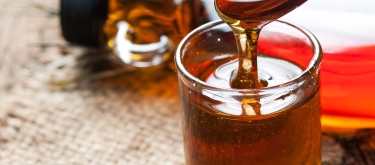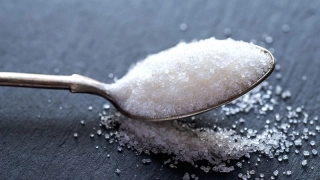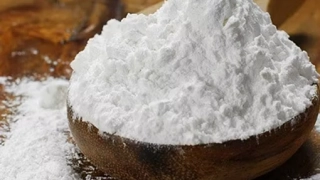Jaggery: Taste Profile, Aroma, Benefits and Health Risks
Jaggery is an unrefined sugar traditionally made from sugarcane or date palm sap. Widely used in South and Southeast Asia, Africa, and Latin America, jaggery is prized for its complex flavor, natural sweetness, and mineral content. Its golden-brown color, sticky texture, and rich aroma make it a staple in countless traditional and modern dishes, both sweet and savory.
Jaggery is naturally gluten-free and suitable for vegetarian and vegan diets. It is a high-carbohydrate food, not suitable for low-sugar or ketogenic diets, and should be consumed with caution by people with diabetes or those needing to control blood sugar. Pure jaggery contains no major allergens, but always check for possible cross-contamination in commercial products.
What does Jaggery taste like?
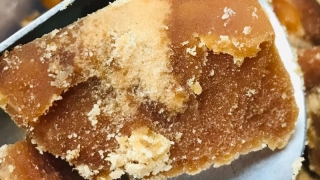
Complete Sensory Description
Jaggery has a deep, complex sweetness that is richer and more aromatic than white sugar.
The first impression is an intense caramel-like sweetness, accompanied by warm notes of molasses, toffee, and dried fruit. As it melts on the tongue, subtle hints of earthiness and a faint bitterness develop, balancing the sweetness and adding depth. The texture varies from soft and pliable to hard and crystalline, depending on the source and processing. The aftertaste is lingering, with echoes of caramel, smoke, and sometimes a touch of mineral saltiness.
In-depth Flavor Analysis
Jaggery’s flavor complexity comes from the presence of natural molasses, minerals (iron, potassium, magnesium), and organic acids that remain after minimal processing. Unlike refined sugar, jaggery retains trace elements from cane juice or palm sap, resulting in a layered, robust sweetness with earthy and slightly tangy undertones. Minor amounts of phenolic compounds and volatile organics contribute to its aromatic character, which can range from floral to smoky depending on raw material and production method.
Culinary Uses and Forms of Consumption
Raw jaggery:
Jaggery is commonly eaten on its own as a treat or paired with nuts and seeds. In South Asia, small pieces of jaggery are often offered as a dessert or snack after meals.
Melted or dissolved jaggery:
When dissolved, jaggery is used as a sweetener in teas (like Indian chai), herbal infusions, and beverages such as lassi and traditional cooling drinks. Melted jaggery is also the base for traditional sweets like chikki (brittle), laddoo, and payasam.
Cooked jaggery:
Jaggery is widely used in cooking and baking, where it imparts a deep caramel flavor to desserts, sauces, and syrups. It is added to rice dishes (pongal, kheer), porridges, and sometimes even savory curries and chutneys, where its complex sweetness balances spices and acidity.
Fermented jaggery:
In some cultures, jaggery is used as a starter for fermenting beverages or making alcoholic drinks such as palm wine.
Not recommended:
Jaggery’s flavor can be overpowered by highly acidic or strongly bitter ingredients. Excessive use may overwhelm subtle flavors in delicate dishes.
Selection, Preparation, and Storage
Selection:
Choose jaggery that is golden to dark brown in color, free from visible impurities, and with a rich, molasses-like aroma. Avoid jaggery with mold, excessive dryness, or an unpleasant odor.
Preparation:
Jaggery can be grated, chopped, or melted before adding to recipes. Dissolve in warm water to make syrup or add directly to hot liquids and batters.
Storage:
Store in an airtight container in a cool, dry place to prevent hardening and mold growth. Properly stored jaggery can last for several months.
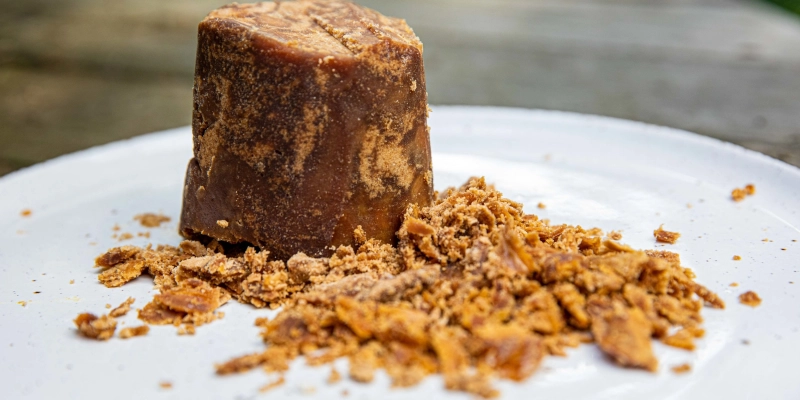
Nutritional Insights
Jaggery is a concentrated source of carbohydrates and sugars, providing quick energy. It contains trace minerals such as iron, potassium, magnesium, and small amounts of antioxidants from plant polyphenols.
Potential benefits:
-
May support iron levels and help prevent mild anemia, especially in plant-based diets
-
Provides electrolytes (potassium, magnesium) that aid hydration and muscle function
-
Offers a less processed alternative to refined sugars, with a richer micronutrient profile
However, jaggery is still high in sugar and calories; excessive consumption can contribute to weight gain and blood sugar spikes.
Historical and Cultural Significance
Jaggery has been used in the Indian subcontinent, Southeast Asia, and Africa for thousands of years. In India, it plays a vital role in religious rituals, harvest festivals, and traditional Ayurvedic medicine as a “purifying” and energizing food. Jaggery is given to celebrate new beginnings, used as temple offerings, and incorporated in countless festive sweets. Its production methods are often family traditions, passed down through generations, and the craft of making jaggery is a symbol of agricultural heritage in many rural communities.
Interesting and Curious Facts
-
Jaggery is sometimes called “medicinal sugar” in Ayurveda and folk medicine due to its trace minerals and warming properties.
-
In some regions, jaggery is used to make natural toffee or fudge-like candies.
-
It is commonly paired with sesame seeds in sweets, as this combination is believed to provide warmth and energy during winter.
-
Unrefined jaggery can vary widely in color and flavor, depending on the plant source (cane vs. palm) and regional techniques.
-
A common misconception is that jaggery is “healthy sugar”; while it contains more minerals, it is still a form of sugar and should be consumed in moderation.
Harm and Dietary Considerations
Jaggery is not suitable for people with diabetes or those on low-sugar diets. Overconsumption can cause weight gain, dental problems, or blood sugar spikes. Rarely, impure jaggery may cause gastrointestinal upset if contaminated. Safe for most people in moderate amounts, including pregnant and breastfeeding women, but always ensure quality.
Religious Dietary Considerations
Jaggery is plant-based and fully acceptable for vegetarian, vegan, Hindu, Buddhist, Halal, and Kosher diets.
Final Thoughts & Sensory Journey
Jaggery delights with deep, aromatic sweetness and caramel richness, adding tradition, warmth, and complexity to both classic and modern dishes.
Resources
-
Davidson, A. (2014). The Oxford Companion to Food. Oxford University Press. ISBN 978-0199677337
-
Sahu, A. et al. (2018). “Jaggery: A Natural Sweetener.” Journal of Food Science and Technology.
-
McGee, H. (2004). On Food and Cooking: The Science and Lore of the Kitchen. Scribner. ISBN 978-0684800011
-
National Institute of Nutrition, India: "Nutritional Value of Indian Foods"

